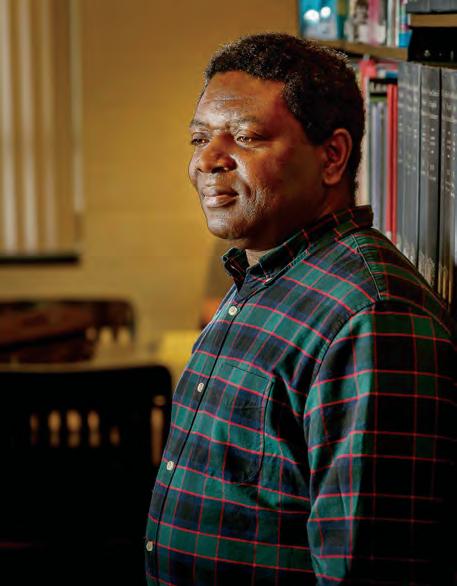
2 minute read
About IIE includes an overview of IIE and provides statistics about the IIE Scholar Rescue Fund
Introduction
IIE-SRF is the only global program that arranges and funds fellowships for threatened and displaced scholars at partnering higher education institutions worldwide. Building upon IIE’s century-long legacy of assisting students and scholars under threat, IIE-SRF has since 2002 supported more than 900 scholars from 60 countries in partnership with 428 host institutions in 50 countries.
Advertisement
Methodology
In this impact study, IIE’s evaluation team looked into the achievements and impact of IIE-SRF scholars following the completion of their fellowships. In doing so, the evaluation team explored scholars’ post-fellowship impact through four lenses: (1) the IIE-SRF fellowship’s effect on the scholars’ skills and careers, including the professional relationships they established; (2) scholars’ contributions to their professional fields through knowledge products and teaching; (3) scholars’ efforts to rebuild the higher education systems in their home countries through teaching, publishing, contributing to public policy, improving institutions, and engaging their communities, and, finally, (4) the impact that scholars who did not return home had through these activities on the countries where they live.
To learn about the scholars’ post-fellowship experiences and achievements, the evaluation team conducted an online survey with IIE-SRF alumni who completed their fellowships between 2003 and 2019. The survey was sent to 439 alumni with active email addresses. With 179 completed surveys and 28 partially completed surveys, the final survey population included 207 IIE-SRF alumni.
The response rate of 47% was remarkably high for an alumni survey going back almost 20 years. The high response rate allowed the evaluation team to conduct analysis at 95% confidence with a 5% margin of error. The evaluation team assessed how representative the survey population was of the overall IIE-SRF alumni population based on home country, year of fellowship completion, and gender.
The evaluation team analyzed the quantitative data using SPSS quantitative data analysis software, primarily using descriptive statistics (e.g., means and frequencies) and some inferential statistics (chi-square test of independence, correlations, independent sample t-tests, etc.). Qualitative data was reviewed to identify salient themes across open-ended responses.
• The respondent population was
representative of the male alumni population, though slightly less representative of the female alumnae.
Alumnae represented 23% of the IIESRF population and 18% of the survey respondent population. The margin of error for generalizations about women was 15% with a 95% confidence interval. • Later IIE-SRF years had a higher response rate compared to earlier years. The difference in response rates by years may limit the evaluation team’s ability to speak to the impact — or challenges — of alumni from countries that were represented mainly in the earlier years of the fellowship. For example, all Palestinian alumni completed their fellowships prior to 2011, and only one of them responded to the survey. Nevertheless, considering that typical alumni of any fellowship program from the earlier years had more time to establish themselves and contribute to their professional fields and communities, this limitation is more likely to underestimate than overestimate the overall impact of the IIE-SRF alumni.
NOTE: Throughout the report, terms “IIE-SRF alumni” and “IIE-SRF fellows” are used to refer to the survey population. The evaluation team used the terms “new communities” and “new countries” interchangeably to refer to countries where IIE-SRF alumni resided that were not their countries of origin, regardless of the length or permanence of their residence in these countries.





